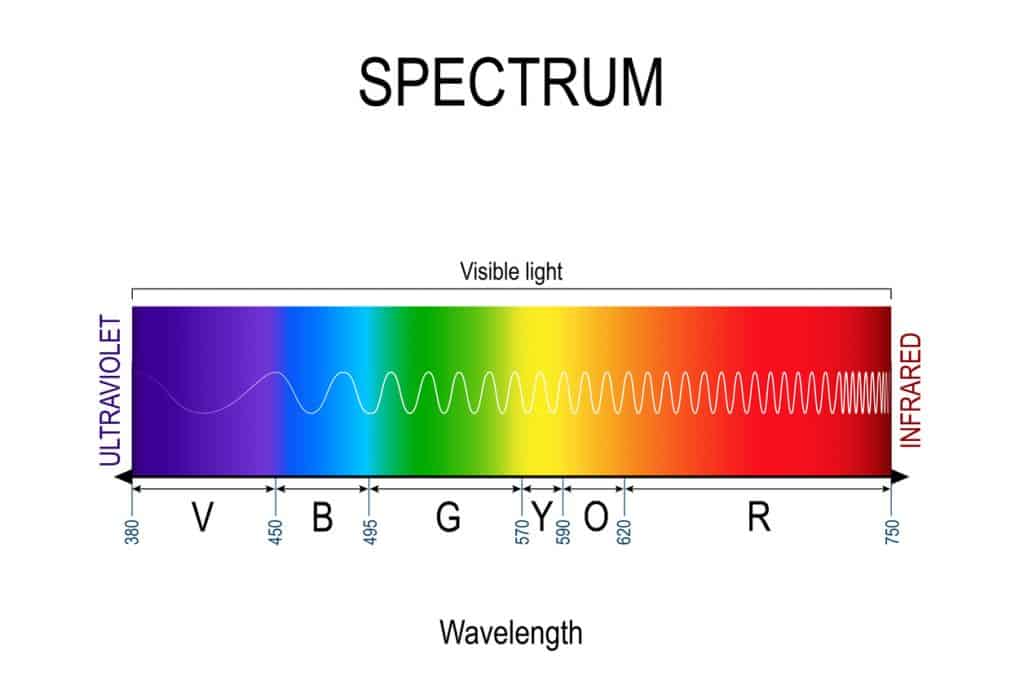Infrared technology or IR assists your barcode scanning and vision applications. Discover more about light and how IR can improve your barcode readability, control the illuminaton of a barcode and improve your business processes.
What is Light?
Light, as most of us commonly know it, is how we describe what brightens a room or what projects from a bulb. In technical terms, however, it is a form of electromagnetic radiation, just as radio waves and microwaves are.
Light, as well as these other waves that we loosely talk about in our lives, are part of the electromagnetic spectrum where these waves are charted by order of their wavelength.
So in specific terms, the light that we commonly refer to in our daily lives is referred to as Visible Light. Directly to the right (longer wavelengths) of visible light on the electromagnetic spectrum is Infrared (IR) Radiation. In some ways we can consider this an invisible form of what we commonly call light. In fact, it can be so close to visible light that some cameras can still see it even though human eyes cannot.

You’re probably thinking, “So what? Why the science lesson? How does this apply to me?”
Short Answer:
Infrared Radiation is quite useful. IR can assist your barcode scanning and vision applications
Long Answer:
1. Easier readability by illumination
By using IR as an invisible light, we can project it on barcodes and other items to be “seen” by the imager and essentially illuminate it for the imager but go undetected by the human eye. This means that we can make it easy for the imager to see the barcode without having to flash bright red, blue, or white lights that can often be distracting or annoying to humans.
2. Compensate for uncertain ambient lighting situations
Another advantage of IR is that it enables us to compensate for environments where the ambient lighting is uncertain.
For example, if we were to develop a scanning solution that relied on the room to be bright with visible light from an adjacent window, when in actuality the system was installed in a room without a window, then we could have scanning performance issues. If rather we did not rely on the ambient light at all and instead used our own IR source to flood the object with IR then it wouldn’t matter if someone used it in the bright sunlight or in a dark closet. The scanning would still take place successfully.
3. Control the illumination of the barcode (or object) being read by the imager
Other aspects that we consider when working on IR applications include the use of IR pass-through windows and specialty mirrors where needed. The use of special windows in IR applications can further enhance the solution’s ability to essentially ignore any visible light variances. By allowing only the IR radiation that we want to pass through the window, we are able to have more control around how illuminated the subject being scanned appears to be by the imager. When mirrors are required for a given application due to space constraints, IR needs to be considered as well. There are special mirror coatings such as protected gold that optimize the amount of IR reflected. The use of other coatings may decrease performance in some applications. Therefore, depending on the wavelength of IR being sought, the selection of the mirror coating needs to be carefully chosen.
What are some other IR applications?
The use of IR is actually more common in our daily lives than we may think. IR is commonly found in:
- night vision goggles
- security cameras,
- and even baby monitors.
In all of these applications, IR is used to illuminate the subject for the camera and ultimately portrayed on a monitor or screen using visible light for human eyes to see.
If you have an application that you believe may benefit from IR, please give us a call and we’d be happy to discuss these and other considerations with you. We offer a full range of OEM and custom application services and can assist with your barcode scanning and vision applications.